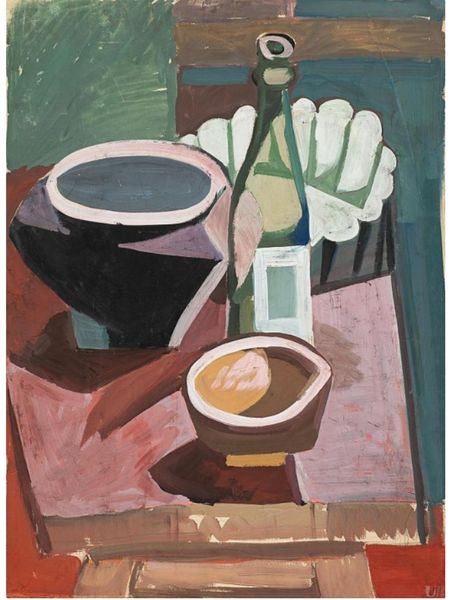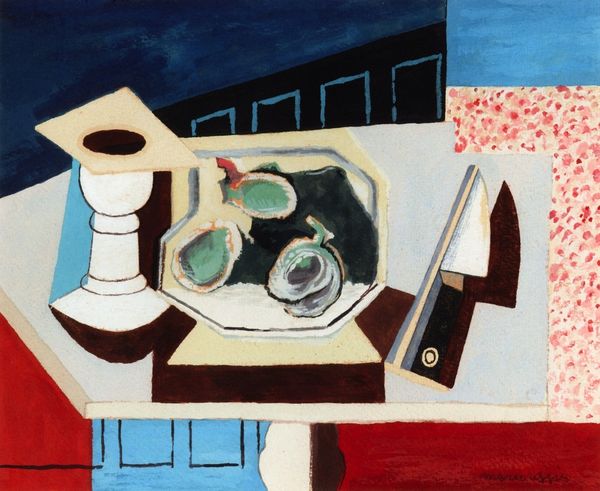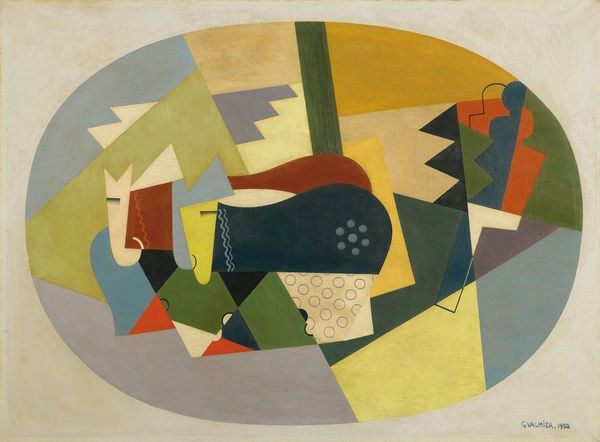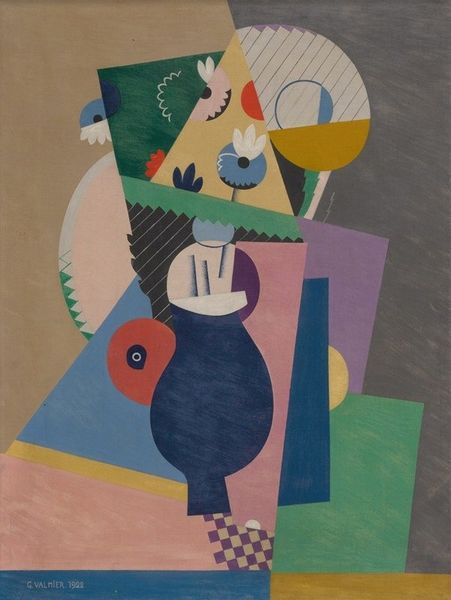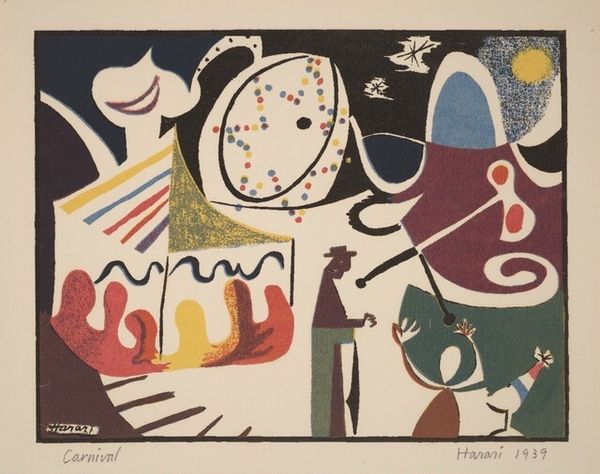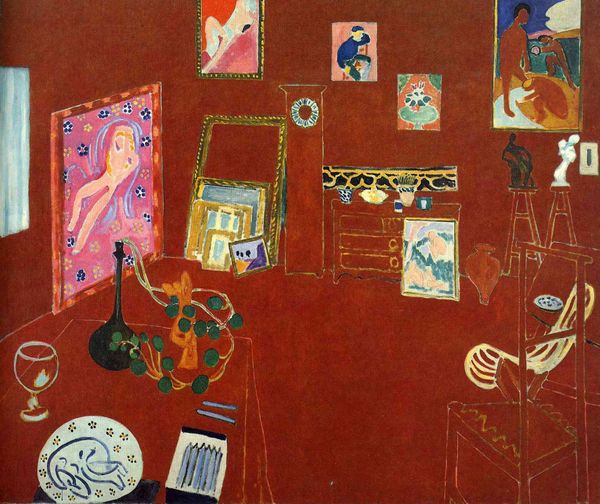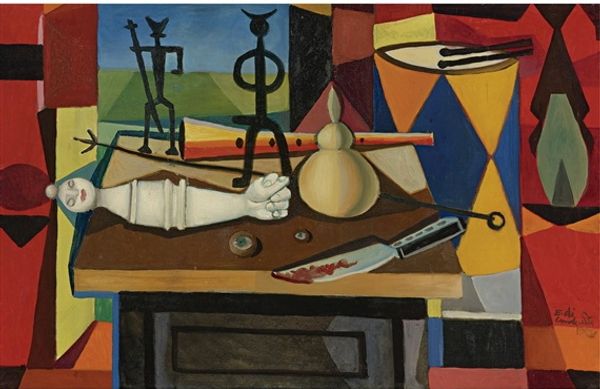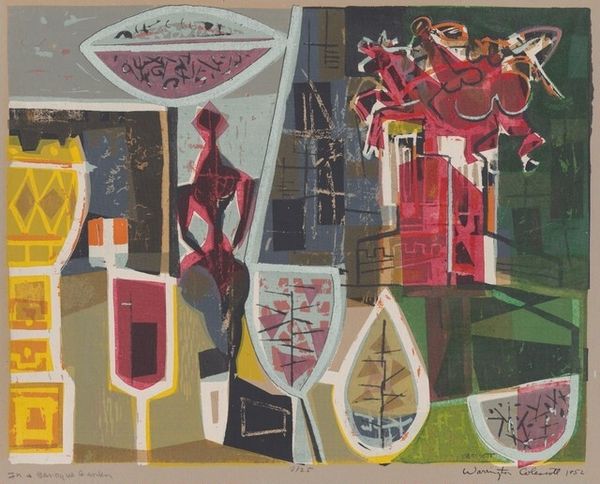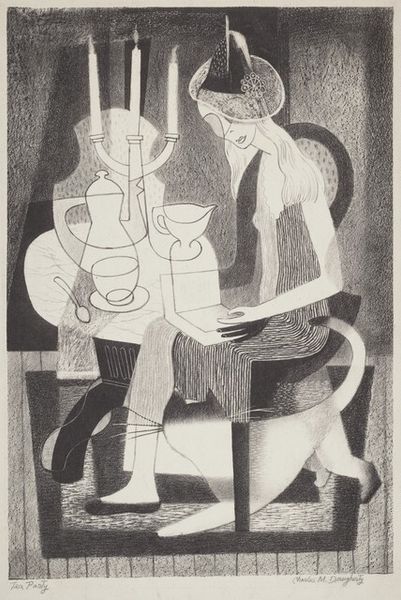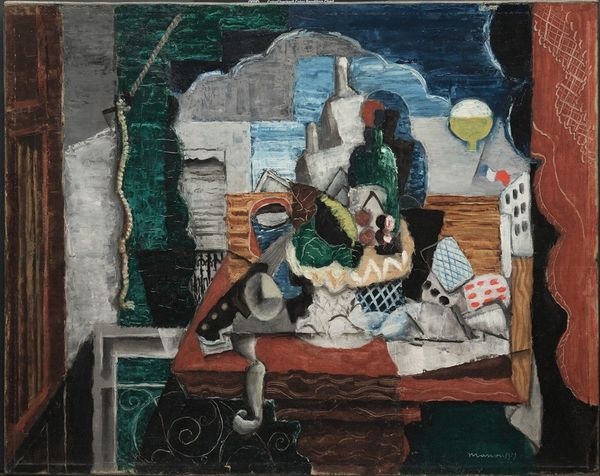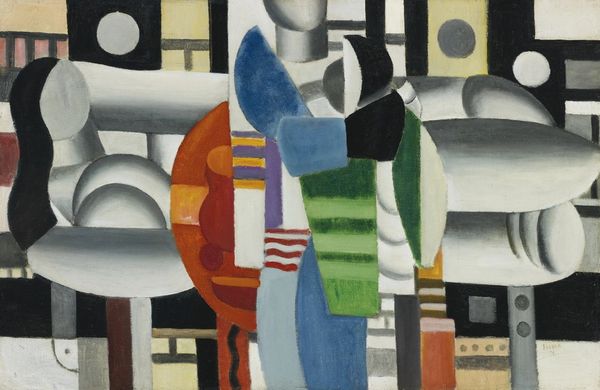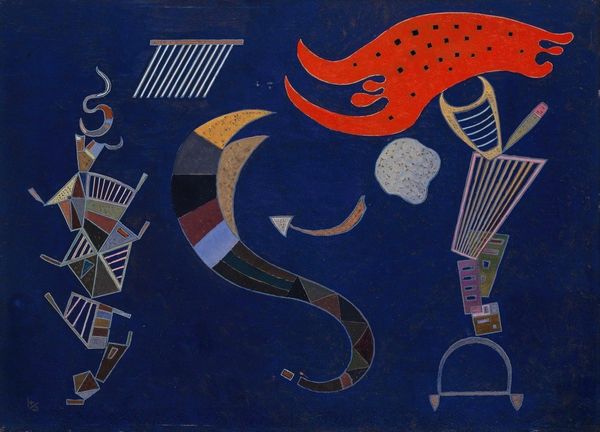
print, watercolor
#
portrait
# print
#
figuration
#
watercolor
#
naive art
#
modernism
#
watercolor
Dimensions: Image: 233 x 289 mm Sheet: 315 x 445 mm
Copyright: National Gallery of Art: CC0 1.0
Editor: This watercolor print, "Interior," created by Florence Kent Hunter between 1935 and 1943, strikes me as intentionally unsettling. The figure’s ambiguous expression coupled with the slightly askew perspective makes it somewhat jarring. What aspects of the composition and style do you find most compelling? Curator: What seizes my attention immediately is the pronounced two-dimensionality. Notice how Hunter employs bold color blocking and flattened forms. The picture plane is overtly emphasized. Editor: Yes, I see that. There’s very little shading, and the space feels compressed. It almost has the character of naive art, yet there are aspects of Modernism that cannot be denied. Curator: Indeed. And what might be the consequence of the use of flatness for this kind of subject? We are looking at an interior space, an environment connoting intimacy and familiarity, are we not? Yet, we have, shall we say, an anti-illusionistic space that rejects depth and volume. Editor: Perhaps that is meant to disrupt expectations, challenging conventional ideas about domestic scenes or portraiture? It’s certainly effective at grabbing my attention. Curator: Precisely. Moreover, observe the use of pattern, not merely for decoration but also for structural definition. The patterned rug in the foreground contends with the grid of the tablecloth for visual dominance, preventing our gaze from resting comfortably. It results in this destabilizing feeling you observed. Editor: That makes sense. I see now how the seemingly simple choices create such a complex and rather dissonant impression. It definitely has the hallmarks of modernism. Curator: I would agree. An artwork where color and form establish that complexity as a structural element for the viewing experience. Editor: Thank you. I now have a better grasp of Hunter's style and how the various elements contribute to the painting's emotional complexity.
Comments
No comments
Be the first to comment and join the conversation on the ultimate creative platform.
